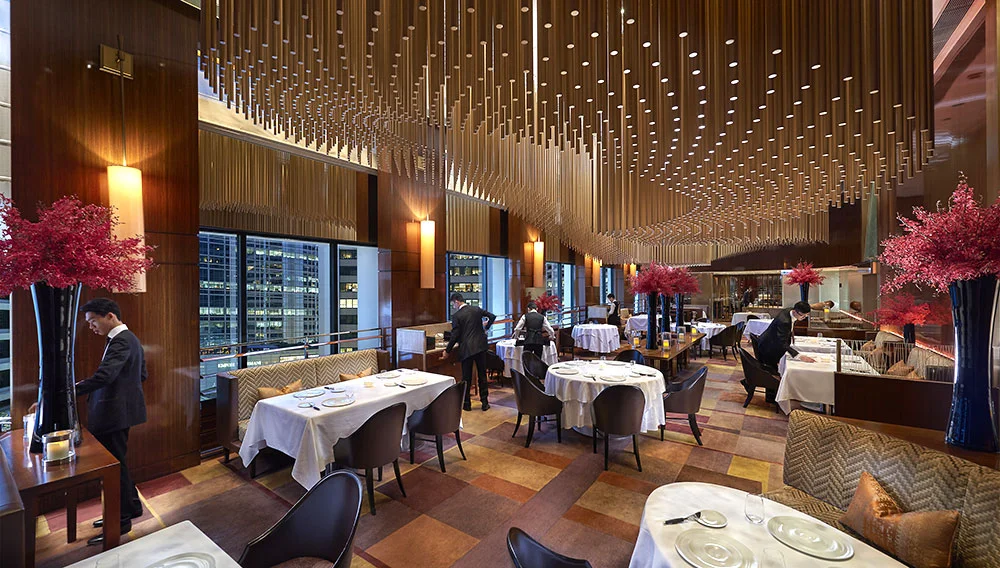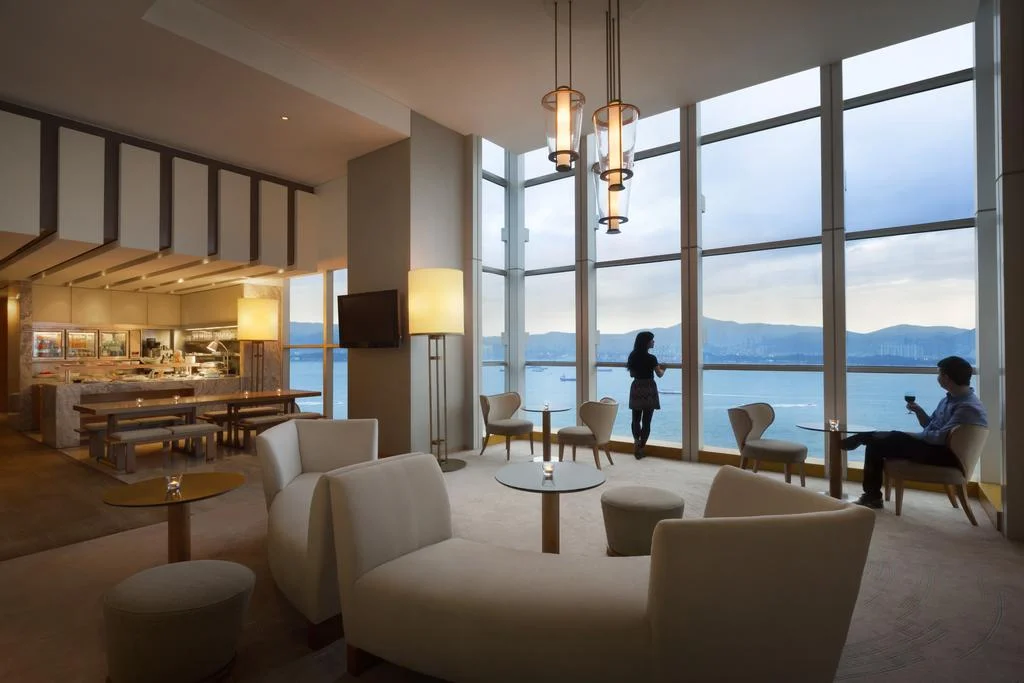Small but Mighty - Chair Glides for Hospitality
Whilst chair glides may not necessarily be the most exciting part of the contract furniture design process, they do serve a vital function in busy hospitality environments where furniture is being constantly repositioned. These small, but mighty nylon chair glides are designed to protect a range of floor surfaces from premature scratches and ease the process for the hotel team and guests to move the furniture around the room without excessive effort. Furniture glides are the generally discrete attachments that are affixed to chair legs with nails, screw threads or adhesive. But which chair leg glides should you choose for your hotel, bar or restaurant seating and tables? And how often should you replace them? Learn everything you need to know in our guide to furniture glides for chairs.
Which Chair Foot Glides Should You Choose?
Generally speaking, hard plastic or nylon chair glides are best for hospitality environments, as they usually last for many years – often for the whole lifetime of a chair. However, the furniture glides that you choose will depend heavily on the type of flooring that you have and will also determine how often they should be replaced.
Chair Glides for Rough, Textured or Uneven Floors
Rough uneven floors can prematurely wear not only the chair glides, but ultimately the underside of the chair legs themselves. Furniture that sits on such floors require a thicker more robust plastic or nylon glide, but it’s also so important to ensure that the frame of your chair is of severe contract standard to withstand the excessive daily usage experienced within a hotel or restaurant to avoid unwanted damage.
Chair Glides for Noisy Floors
Whilst plastic and nylon furniture glides for chairs are the most popular option and are often chosen for their robustness and subsequent longevity, they can sometimes be a little noisy when used on hard floors such as wood, polished concrete, laminate, vinyl, lino, paquet or tiles. In these cases, a felt chair glide may be a preferred solution – made from a softer material, they are quieter and smoother on some hard floors providing the floor is a smooth surface. Felt alleviate the distracting noise of other customers chairs being pushed under their table whilst you are enjoying a meal. Felt is perfect if you’re looking for chair leg glides for wood floors, this also helps protect the wooden floors from chips and scratches to the surface. However felt glides will always wear quicker and are less easy to affix to the end of a chair leg. They may become detached more easily by friction on a textured floor, so it’s recommended to avoid them if your floor is carpeted.
Generally speaking, hard plastic or nylon chair glides are best for hospitality environments, as they usually last for many years – often for the whole lifetime of a chair. However, the furniture glides that you choose will depend heavily on the type of flooring that you have and will also determine how often they should be replaced.
Chair Glides for Rough, Textured or Uneven Floors
Rough uneven floors can prematurely wear not only the chair glides, but ultimately the underside of the chair legs themselves. Furniture that sits on such floors require a thicker more robust plastic or nylon glide, but it’s also so important to ensure that the frame of your chair is of severe contract standard to withstand the excessive daily usage experienced within a hotel or restaurant to avoid unwanted damage.
Chair Glides for Noisy Floors
Whilst plastic and nylon furniture glides for chairs are the most popular option and are often chosen for their robustness and subsequent longevity, they can sometimes be a little noisy when used on hard floors such as wood, polished concrete, laminate, vinyl, lino, paquet or tiles. In these cases, a felt chair glide may be a preferred solution – made from a softer material, they are quieter and smoother on some hard floors providing the floor is a smooth surface. Felt alleviate the distracting noise of other customers chairs being pushed under their table whilst you are enjoying a meal. Felt is perfect if you’re looking for chair leg glides for wood floors, this also helps protect the wooden floors from chips and scratches to the surface. However felt glides will always wear quicker and are less easy to affix to the end of a chair leg. They may become detached more easily by friction on a textured floor, so it’s recommended to avoid them if your floor is carpeted.
Chair Glides for Soft Floors
If the floor of your hotel, bar or restaurant is soft, it’s important that your furniture gliders must be able to spread the weight of the chair as much as possible to avoid excessive indentations to the carpet. For soft floors, glides need to be specified appropriate to the size and weight of the chair or table. Usually, glides are specified by the manufacturer of contract seating. However, interior designers can specify custom glides if they wish.
Chair Glides for Carpeted Flooring
For carpeted surfaces, brands such as Magiglides are a strong contender. These combine a Teflon-like underside (in contact with the floor) and a hard rubber top to absorb vibrations. These furniture floor protectors are screwed into the chair’s leg and allow it to glide smoothly across most surfaces – but particularly carpets. These patented rubber chair glides can be added to chairs and are a slightly more expensive option than standard glides but are often worth that modest uplift in cost.
If the floor of your hotel, bar or restaurant is soft, it’s important that your furniture gliders must be able to spread the weight of the chair as much as possible to avoid excessive indentations to the carpet. For soft floors, glides need to be specified appropriate to the size and weight of the chair or table. Usually, glides are specified by the manufacturer of contract seating. However, interior designers can specify custom glides if they wish.
Chair Glides for Carpeted Flooring
For carpeted surfaces, brands such as Magiglides are a strong contender. These combine a Teflon-like underside (in contact with the floor) and a hard rubber top to absorb vibrations. These furniture floor protectors are screwed into the chair’s leg and allow it to glide smoothly across most surfaces – but particularly carpets. These patented rubber chair glides can be added to chairs and are a slightly more expensive option than standard glides but are often worth that modest uplift in cost.
How to Replace Chair Foot Glides
There are many methods for replacing furniture floor protectors, and it’s always worth contacting your furniture supplier to see if they can assist with advice in removing existing glides. It is a simple process so if you wish to give it a go yourself, try the following steps:
There are many methods for replacing furniture floor protectors, and it’s always worth contacting your furniture supplier to see if they can assist with advice in removing existing glides. It is a simple process so if you wish to give it a go yourself, try the following steps:
- Turn the chair upside down and place the tip of a chisel (bevelled side up) at the edge of the glide.
- Drive the end of the chisel underneath the glide until it rises up a couple of mm, then, move the chisel to the other side of the glide and apply pressure from that side.
- Move the chisel around the circumference of the glide until it begins to loosen.
- Pop the glide off. If the glide has broken, use diagonal pliers to remove the small pin. If the pin is too small to remove, tap it into the leg with a rubber hammer.
- Place the tip of a new glide onto the end of the chair leg. Do not place the point of the new glide into the old hole as it won’t hold. It’s better to place it to the side of the old hole.
- Hammer the new glide down tight into the leg to finish. The glide will not be completely central but don’t worry – the glide will still function as intended.


